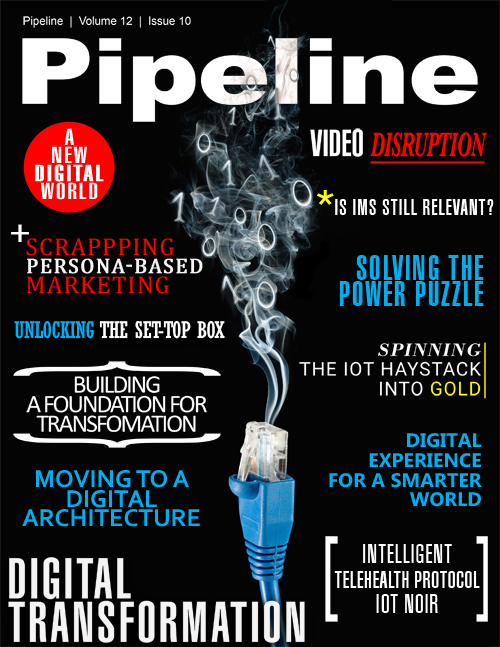A Digital World
By: Paula Zimmerman

Main Street is dying. Think about magazines featuring quaint little towns with independent storefronts as nothing more than vacation destinations and retirement villages.
Today, urban patterns are shifting. Goods are introduced first to buyers online and not in stores. And the same goods are available from many different places. Markets are changing.
We all know just who our customer is, right? What customers want? How happy customers are with our service? Wouldn't it be great to answer that with a simple “yes?" Realistically, the answer is not that simple. Customer demographic and profiles are evolving and with them customers preferences are expanding. And, in the most successful organizations, the supplier is evolving with their customers. Life is about change.
Given the advent of Big Data, we can characterize the market with some certainty. For example, there are baby boomers, transitionals, and millennials. We’ve known the baby boomers for a long time. In a very real way, telecom and baby boomers have grown up together. Baby boomers want convenience. They hate hassles. Baby boomers respect dedicated personal service. They have lots of disposable income to spend. Well, that’s changing. Boomers are aging out of the workforce and transitioning to fixed income retirement. The traditional storefront is departing with them. There are still a lot of them, but their wants and needs are shrinking.
Boomers birthed the transitional generation. These transitionals grew up with the development of the net and the heyday of the mall. They are fully adjusted to a mixed environment of computer, mobile phone, and big box store. Inventory management, from a big box store like Walmart, or an online store like Amazon, has brought a wealth of new goods to their doorstop. They time manage content distribution with a DVR. Their desires range broadly and are eclectic. They have the cash to spend but not the time to leisurely shop. They love Amazon’s home delivery revolution.
The transitionals birthed the millennials. It can be argued that digital telecom nurtured the millennial. Millennials first computer was a smartphone. Their first purchase in life was on in-app purchase or song from iTunes. They stream their digital content from the cloud to their connected tablet. Millennials learned to shop before they learned to drive.
Millennials demand at-will connectivity and on-demand transaction completion. They don’t complain about waiting; they just immediately shift to another activity. They are transitioning from teens with little free cash to entry workers with money to burn. They grew up in a world of plenty and have many, many wants; often for digital content. They don't have any quams of shelling out real, hard earned cash for virtual items in their favorite games. And they are the future of the marketplace. For the millennial the digital experience must be smooth, clean, and most of all fun.
These generational characterizations only just scratch the surface. But, service provider are challenge by selling into and servicing a segmented market made of very different needs and personal wants. Today, we expect to refine that segmentation right down to small target groups and even to an individual. But to define the customer, we need data and in many aspects today, the customer is their data. The customer today is defined by their actions.
Transactional Transparency
CSPs are enablers of the digital life. Phone companies inherently become data companies which are now transforming into digital providers. Just two decades ago the National Science Foundation opened the Internet to commerce. Amazon was immediately founded. We frequently hear, “There is no storefront anymore.” But that is also changing. Every big box has a web commerce site and even foundation e-commerce companies like Amazon are now opening bookstores. Customers move freely between Internet portals to shop and retail locations to pick up their goods; or to retailers to touch and feel products and online e-retailers to compare and buy them. Companies and their customers now have multiple channels to choose from creating more choice and complexity along the way.
The growth market for baby boomers is gone. Many are transitioning into retirement and adjusting to fixed incomes. They live with neatly packaged service bundles and continue to consume limited content. They aren't the first to adopt new technology, but services that provide rich communications, daily life convenience, and health and wellness monitoring will support their transition and new lifestyle. Marketing to boomers needs to change to reflect their lifestyle too.
The growth market for transitionals is also disappearing. At one time there were home computers and cars – two separate activity centers. Now there are smartphones too. $12 Billion in sales were made from smartphones last year.[1] They are 5% of the e-commerce market and growing. They are becoming our banking center. A smartphone is a built-in multi-channel device. It accompanies today’s customer everywhere. Our goal is to have it guide the customer to us.
What used to be impressive, quickly becomes the norm. I know this from my own experience. Each new advancement in digital lifestyle is compared to every digital interaction we experience. Think about the introduction of the Uber app. One tap and I can request a ride to the destination of my choice. And, I’m not caught waiting with a sound track playing in my ear. I see who is available, where they are, and choose my ride. I see their progress on a map as they drive toward me. Now think of calling in a service request for a problem in home video service. Half of customers using contact centers remain unsatisfied.[2] We must wait on a service agent to hear and understand our issue, participate in some repetitive interactive tests, get a future appointment window and wait: wait days and hours for a home technician who then has to call who knows how to fix your issue. Are you surprised the unhappy customer trolls you on social media?



















